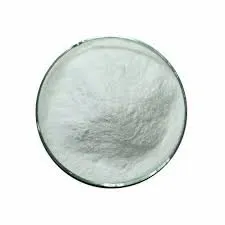
Nov . 07, 2024 14:11 Back to list
Understanding the Meaning of HPMC and Its Applications in Various Fields
What Does HPMC Stand For?
HPMC, or Hydroxypropyl Methylcellulose, is a non-ionic cellulose ether that has garnered significant attention in various industries, primarily in pharmaceuticals, food production, and construction. Understanding what HPMC stands for and its applications can provide valuable insight into its role in modern manufacturing and consumer products.
Definition and Composition
Hydroxypropyl Methylcellulose is derived from cellulose, a natural polymer obtained from plant cell walls. The process of creating HPMC involves substituting the hydroxyl groups in cellulose with hydroxypropyl and methyl groups. This modification enhances the solubility and versatility of cellulose, making it an invaluable additive for many applications. The degree of substitution—how many hydroxyl groups are replaced—determines the properties of HPMC, such as its viscosity and solubility in water.
Applications in Pharmaceuticals
One of the most significant uses of HPMC is in the pharmaceutical industry. It serves as a binder and a thickening agent in the formulation of tablets and capsules. Because HPMC is non-toxic and biodegradable, it is ideal for use in medical products. It also offers advantages in controlled-release formulations. When used as a matrix for drug delivery, HPMC can help regulate the release of medication into the body over time, enhancing therapeutic effectiveness while minimizing side effects.
Moreover, HPMC is used in ophthalmic solutions. Its ability to retain moisture makes it an effective agent in artificial tears and other eye drops, providing relief from dryness and irritation. In addition, HPMC serves as a stabilizing agent in various injectable medications, ensuring consistent dosing and efficacy.
Role in Food Production
what does hpmc stand for

HPMC is also widely utilized in the food industry, where it acts as a thickener, emulsifier, and stabilizer. Its ability to improve the texture and mouthfeel of food products has made it a common ingredient in sauces, dressings, and baked goods. Because HPMC is plant-derived, it is considered suitable for vegetarian and vegan diets, providing an alternative to animal-derived gelatin or other thickeners.
In low-fat and reduced-calorie products, HPMC can help mimic the creaminess and viscosity typically provided by fats, enabling manufacturers to create healthier options without sacrificing taste and quality. Additionally, HPMC's emulsifying properties help maintain the consistency and shelf life of products, making it an essential component in food technology.
Construction Industry Applications
Beyond pharmaceuticals and food, HPMC plays a vital role in the construction sector, particularly in the formulation of cementitious materials such as tile adhesives, plasters, and grouts. Here, HPMC enhances the workability of the mixtures, allowing for easier application and improved adhesion to surfaces. It also controls water retention, which is critical for enabling proper curing of construction materials.
By improving the fluidity and viscosity of cement-based products, HPMC allows for smooth application and helps reduce the risk of cracks and other structural issues. Its role in construction underscores the versatility and practical benefits of using HPMC in various formulations.
Conclusion
In summary, HPMC, or Hydroxypropyl Methylcellulose, is a vital ingredient across multiple industries, stemming from its unique properties and benefits. Its applications in pharmaceuticals, food production, and construction exemplify its versatility and necessity in modern manufacturing. As industries continue to innovate and seek sustainable solutions, HPMC’s role is likely to expand, reinforcing its significance in a range of products that consumers rely on daily. Understanding what HPMC stands for not only highlights its value in technical applications but also sheds light on the complexity and interconnectedness of the materials we use in our lives.
-
Versatile Hpmc Uses in Different Industries
NewsJun.19,2025
-
Redispersible Powder's Role in Enhancing Durability of Construction Products
NewsJun.19,2025
-
Hydroxyethyl Cellulose Applications Driving Green Industrial Processes
NewsJun.19,2025
-
Exploring Different Redispersible Polymer Powder
NewsJun.19,2025
-
Choosing the Right Mortar Bonding Agent
NewsJun.19,2025
-
Applications and Significance of China Hpmc in Modern Industries
NewsJun.19,2025







